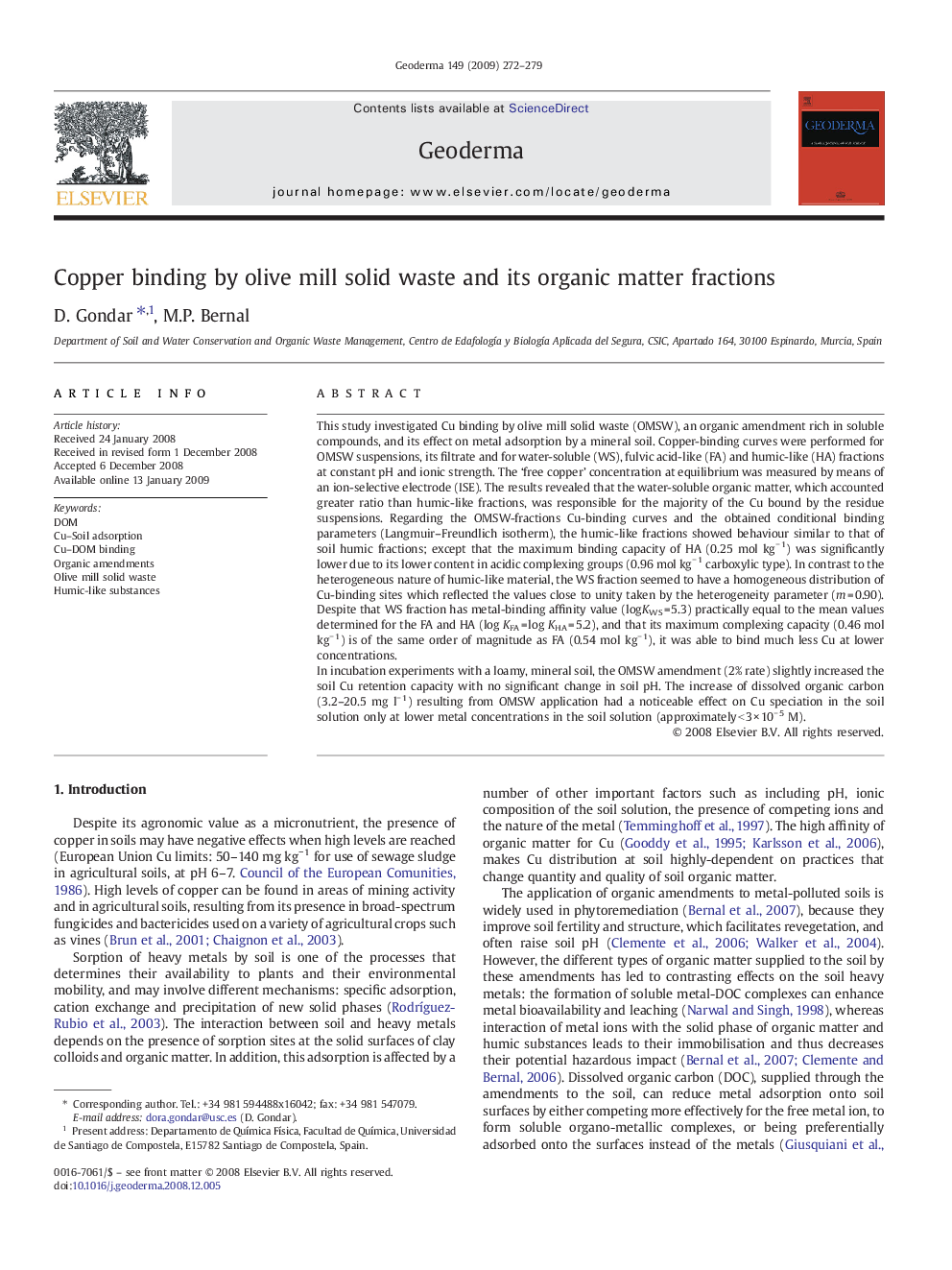| Article ID | Journal | Published Year | Pages | File Type |
|---|---|---|---|---|
| 4574581 | Geoderma | 2009 | 8 Pages |
This study investigated Cu binding by olive mill solid waste (OMSW), an organic amendment rich in soluble compounds, and its effect on metal adsorption by a mineral soil. Copper-binding curves were performed for OMSW suspensions, its filtrate and for water-soluble (WS), fulvic acid-like (FA) and humic-like (HA) fractions at constant pH and ionic strength. The ‘free copper’ concentration at equilibrium was measured by means of an ion-selective electrode (ISE). The results revealed that the water-soluble organic matter, which accounted greater ratio than humic-like fractions, was responsible for the majority of the Cu bound by the residue suspensions. Regarding the OMSW-fractions Cu-binding curves and the obtained conditional binding parameters (Langmuir–Freundlich isotherm), the humic-like fractions showed behaviour similar to that of soil humic fractions; except that the maximum binding capacity of HA (0.25 mol kg− 1) was significantly lower due to its lower content in acidic complexing groups (0.96 mol kg− 1 carboxylic type). In contrast to the heterogeneous nature of humic-like material, the WS fraction seemed to have a homogeneous distribution of Cu-binding sites which reflected the values close to unity taken by the heterogeneity parameter (m = 0.90). Despite that WS fraction has metal-binding affinity value (logKWS = 5.3) practically equal to the mean values determined for the FA and HA (log KFA = log KHA = 5.2), and that its maximum complexing capacity (0.46 mol kg− 1) is of the same order of magnitude as FA (0.54 mol kg− 1), it was able to bind much less Cu at lower concentrations.In incubation experiments with a loamy, mineral soil, the OMSW amendment (2% rate) slightly increased the soil Cu retention capacity with no significant change in soil pH. The increase of dissolved organic carbon (3.2–20.5 mg l− 1) resulting from OMSW application had a noticeable effect on Cu speciation in the soil solution only at lower metal concentrations in the soil solution (approximately < 3 × 10− 5 M).
